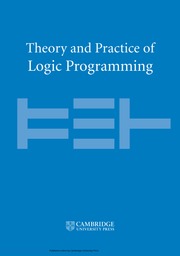Article contents
Interactive Text Graph Mining with a Prolog-Based Dialog Engine
Published online by Cambridge University Press: 07 October 2020
Abstract
On top of a neural network-based dependency parser and a graph-based natural language processing module, we design a Prolog-based dialog engine that explores interactively a ranked fact database extracted from a text document. We reorganize dependency graphs to focus on the most relevant content elements of a sentence and integrate sentence identifiers as graph nodes. Additionally, after ranking the graph, we take advantage of the implicit semantic information that dependency links and WordNet bring in the form of subject–verb–object, “is-a” and “part-of” relations. Working on the Prolog facts and their inferred consequences, the dialog engine specializes the text graph with respect to a query and reveals interactively the document’s most relevant content elements. The open-source code of the integrated system is available at https://github.com/ptarau/DeepRank.
Keywords
Information
- Type
- Rapid Communication
- Information
- Copyright
- © The Author(s), 2020. Published by Cambridge University Press
Footnotes
We are thankful to the anonymous reviewers of PADL’2020 for their careful reading and constructive suggestions.
References
- 3
- Cited by


